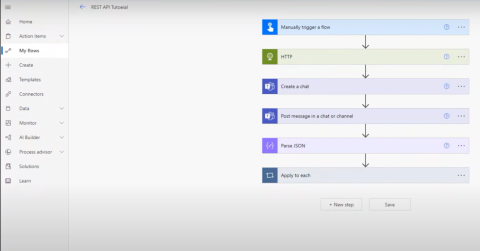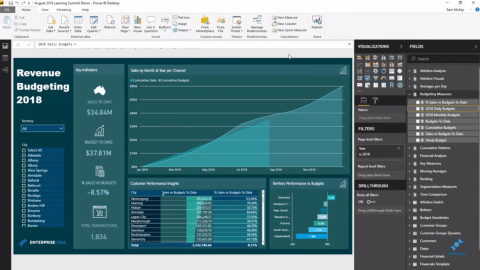Power Automate の文字列関数: Substring と IndexOf
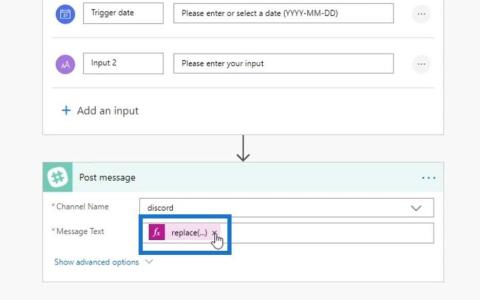
Microsoft フローで使用できる 2 つの複雑な Power Automate String 関数、substring 関数とindexOf 関数を簡単に学習します。
Pythonでプログラミングする場合、信頼できるチートシートをそばに置いておくと状況が大きく変わります。Python はそのシンプルさと読みやすさで知られているかもしれませんが、その広範な機能を覚えるのが多すぎることは否定できません。
Python チートシートは、初心者にも経験豊富な開発者にも便利なリファレンスとして役立ちます。これらは、さまざまなコマンド、構文、データ構造などに関する基本的なリファレンス ガイドを提供します。
このガイドは、特に初心者にとって圧倒される可能性があるさまざまな関数、ライブラリ、クラス、および構文をナビゲートするのに役立つ Python のチートシートです。

あなたはオールドスクールですか?ダウンロードし���印刷することをお勧めします。Python の学習に役立つ以下の PDF をチェックしてください。
目次
Python 構文の基本に関するクイック リファレンス
Python チートシートの開始として、Python 構文の基本をいくつか見ていきます。Python の基本をしっかりと理解すると、より複雑なコードを記述するための強固な基盤が得られます。
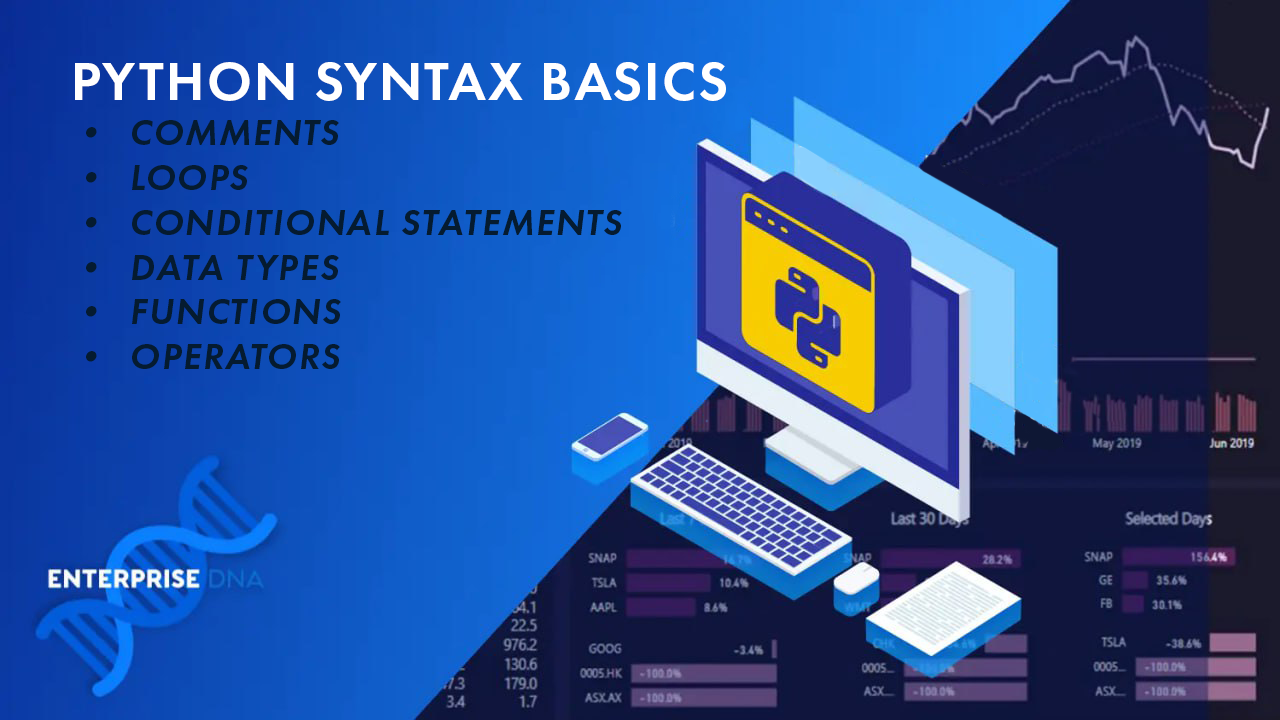
このリファレンスのために、コメント、変数、データ型、条件ステートメント、ループ、および関数を含めました。
1. コメント
コメントは、思考プロセスを説明し、コードを読みやすくするため、コードの重要な部分です。Python では、ハッシュ記号 (#) を使用して単一行のコメントを作成できます。
# This is a single-line comment.
複数行のコメントの場合は、三重引用符 (一重引用符または二重引用符) を使用できます。
""" This is a
multi-line
comment. """
2. 変数
Python の変数はデータを保存するために使用されます。等号 (=) を使用して変数に値を割り当てることができます。
x = 5
name = "John"
変数名はわかりやすいものにし、スペースには小文字とアンダースコアを使用するという命名規則に従ってください。
user_age = 25
favorite_color = "blue"
3. データ型
Python 言語には、デフォルトでいくつかのデータ型が組み込まれています。より一般的なものには次のようなものがあります。
テキストタイプ: str
ブール型: bool
数値型: int、float、complex
シーケンスの種類: リスト、タプル、範囲
なしタイプ:なしタイプ
Python オブジェクトのデータ型を調べるには、type()関数を使用できます。例えば:
name = 'jane'
print(type(name))
#Output: 'str'4. 条件文
Python の条件ステートメントを使用すると、特定の条件が満たされた場合にのみコードを実行できます。一般的な条件文は、「if」、「elif」、および「else」です。
if condition:
# Code to execute if the condition is true
elif another_condition:
# Code to execute if the another_condition is true
else:
# Code to execute if none of the conditions are true
5. ループ
ループは、コードのブロックを繰り返し実行するために使用されます。Python には、「for」ループと「while」ループの 2 種類のループがあります。
両方を見てみましょう:
for ループ:
for variable in iterable:
# Code to execute for each element in the iterable
While ループ:
while condition:
# Code to execute while the condition is true
これらのループ内で、条件ステートメントと制御ステートメントを使用してプログラムのフローを制御できます。
6. 機能
Python の関数は、特定のタスクを実行するコードのブロックです。「 def」キーワードの後に、関数名と入力パラメータを含むかっこを続けて使用して、関数を定義できます。
def function_name(parameters):
# Code to execute
return result
関数を呼び出すには、関数名の後に必要な引数を含むかっこを続けて使用します。
function_name(arguments)
Python の基本について説明したので、次のセクションではさらに高度なトピックに進みましょう。
Python データ構造のクイック リファレンス
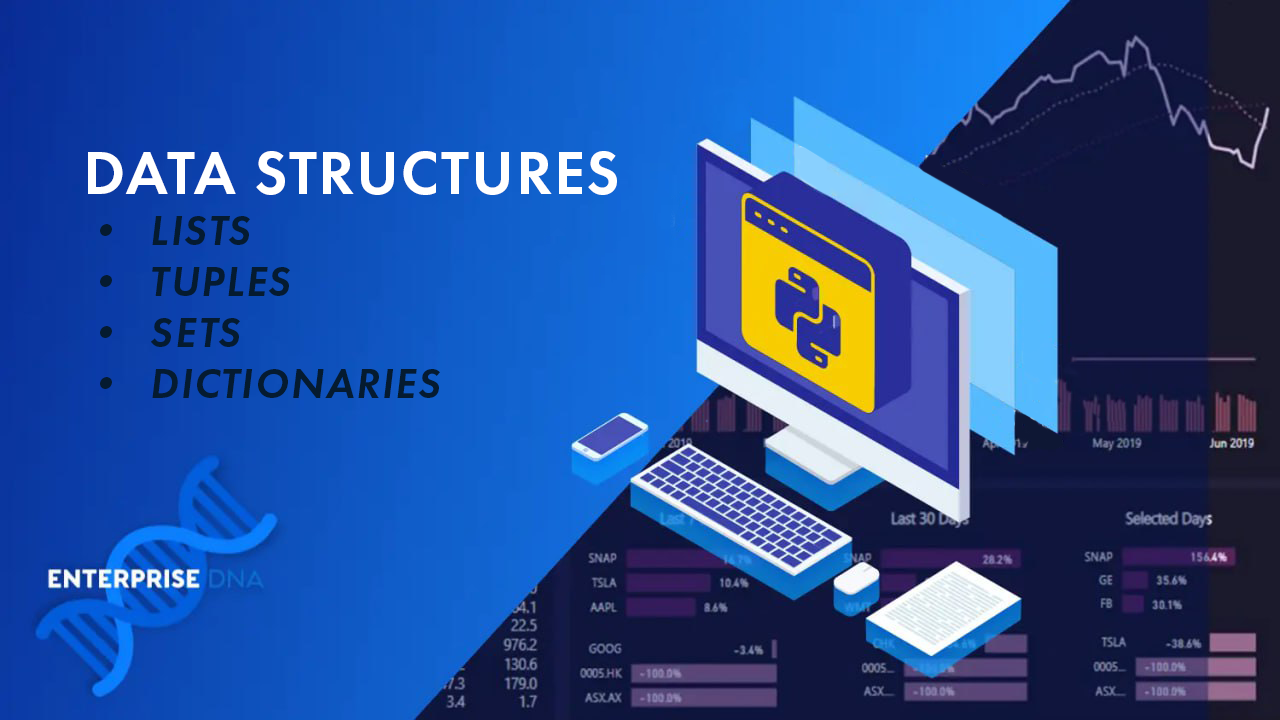
次に Python チートシートで、Python で最も一般的に使用されるデータ構造のいくつかについて説明します。これらのデータ構造は、プログラミング プロジェクトのデータを管理および整理する際に不可欠です。
Python には、上級開発者が使用できるデータ構造が多数あります。ただし、 List、Tuples、Sets、およびDictionariesに焦点を当てます。
1. リスト
Python のリストは、変更可能で順序付けられた要素のシーケンスです。リストを作成するには、角括弧を使用し、要素をカンマで区切ります。
Python リストは、文字列、整数、ブール値などのさまざまなデータ型を保持できます。Pythonリストを使用して実行できる操作の例をいくつか示します。
リストを作成します。
my_list = [1, 2, 3]アクセス要素:
my_list[0]要素を追加します。
my_list.append(4)2.タプル
タプルはリストに似ていますが、不変です。つまり、一度作成した要素は変更できません。かっこを使用し、要素をカンマで区切ることでタプルを作成できます。
タプル操作の例をいくつか示します。
タプルを作成します。
my_tuple = (1, 2, 3)アクセス要素:
my_tuple[0] #Output: 13. セット
セットは、順序付けされていない一意の要素のコレクションです。set() 関数または中括弧を使用してセットを作成できます。
一意である限り、さまざまなデータ型を保持することもできます。集合演算の例をいくつか示します。
セットを作成します。
my_set = {1, 2, 3}要素を追加します。
my_set.add(4)要素を削除します。
my_set.remove(1)4. 辞書
ディクショナリは、キーと値のペアの順序付けされていないコレクションであり、キーは一意です。中括弧を使用し、キーと値をコロンで区切って辞書を作成できます。辞書操作の例をいくつか示します。
辞書を作成します。
my_dict = {'key1': 'value1', 'key2': 'value2'}アクセス要素:
my_dict['key1'] #Output:'value1'キーと値のペアを追加します。
my_dict['key3'] = 'value3'キーと値のペアを削除します。
del my_dict['key1']Python プロジェクトでこれらのデータ構造を練習して探索し、その使用法に習熟することを忘れないでください。次に、ファイル I/O タスクのリファレンスを紹介します。
Quick Reference for Python File I/O

In this section of the Python cheat sheet, we’ll focus on some common tasks related to working with files in Python, such as reading, writing, and appending data.
1. Reading Files
To read a file, you first need to open it using the built-in open() function, with the mode parameter set to ‘r‘ for reading:
file_obj = open('file_path', 'r')
Now that your file is open, you can use different methods to read its content:
read(): Reads the entire content of the file.
readline(): Reads a single line from the file.
readlines(): Returns a list of all lines in the file.
It’s important to remember to close the file once you’ve finished working with it:
file_obj.close()
Alternatively, you can use the with statement, which automatically closes the file after the block of code completes:
with open('file_path', 'r') as file_obj:
content = file_obj.read()
2. Writing Files
To create a new file or overwrite an existing one, open the file with mode ‘w‘:
file_obj = open('file_path', 'w')
Write data to the file using the write() method:
file_obj.write('This is a line of text.')
Don’t forget to close the file:
file_obj.close()
Again, consider using the with statement for a more concise and safer way to handle files:
with open('file_path', 'w') as file_obj:
file_obj.write('This is a line of text.')
3. Appending to Files
To add content to an existing file without overwriting it, open the file with mode ‘a‘:
file_obj = open('file_path', 'a')
Use the write() method to append data to the file:
file_obj.write('This is an extra line of text.')
And, as always, close the file when you’re done:
file_obj.close()
For a more efficient and cleaner approach, use the with statement:
with open('file_path', 'a') as file_obj:
file_obj.write('This is an extra line of text.')
By following these steps and examples, you can efficiently navigate file operations in your Python applications. Remember to always close your files after working with them to avoid potential issues and resource leaks!
In the next section, we provide a reference for error handling in Python.
Quick Reference for Error Handling in Python

In this section, you’ll learn about error handling in Python, which plays a crucial role in preventing the abrupt termination of your programs when it encounters an error.
We’ll cover the following sub-sections: Try and Except, Finally, and Raising Exceptions.
1. Try and Except
To handle exceptions in your code, you can use the try and except blocks. The try block contains the code that might raise an error, whereas the except block helps you handle that exception, ensuring your program continues running smoothly.
Here’s an example:
try:
quotient = 5 / 0
except ZeroDivisionError as e:
print("Oops! You're trying to divide by zero.")
In this case, the code inside the try block will raise a ZeroDivisionError exception. Since we have an except block to handle this specific exception, it will catch the error and print the message to alert you about the issue.
2. Finally
The finally block is used when you want to ensure that a specific block of code is executed, no matter the outcome of the try and except blocks. This is especially useful for releasing resources or closing files or connections, even if an exception occurs, ensuring a clean exit.
Here’s an example:
try:
# Your code here
except MyException as e:
# Exception handling
finally:
print("This will run no matter the outcome of the try and except blocks.")
3. Raising Exceptions
You can also raise custom exceptions in your code to trigger error handling when specific conditions are met. To do this, you can use the raise statement followed by the exception you want to raise (either built-in or custom exception).
For instance:
def validate_age(age):
if age < 0:
raise ValueError("Age cannot be a negative value.")
try:
validate_age(-3)
except ValueError as ve:
print(ve)
In this example, we’ve defined a custom function to validate an age value. If the provided age is less than zero, we raise a ValueError with a custom message. When calling this function, you should wrap it in a try-except block to handle the exception properly.
Next, we’re going to provide a quick reference for popular Python modules and packages. Let’s go!
Quick Reference for Python Modules and Packages

This section of our cheat sheet is for Python packages and modules, which are essential for structuring and organizing your code cleanly and efficiently.
You’ll learn about importing modules and creating packages.
1. Importing Modules
Modules in Python are files containing reusable code, such as functions, classes, or variables. Python offers several modules and packages for different tasks like data science, machine learning, robotics, etc.
To use a module’s contents in your code, you need to import it first. Here are a few different ways to import a module:
import : This imports the entire module, and you can access its contents using the syntax ‘module_name.content_name.’
For example:
import random
c = random.ranint()from import : This imports a specific content (function or variable) from the module, and you can use it directly without referencing the module name.
from math import sin
c = sin(1.57)from import *: This imports all contents of the module. Be careful with this method as it can lead to conflicts if different modules have contents with the same name.
Some commonly used built-in Python modules include:
math: Provides mathematical functions and constants
random: Generates random numbers and provides related functions
datetime: Handles date and time operations
os: Interacts with the operating system and manages files and directories
2. Creating Packages
Packages in Python are collections of related modules. They help you organize your code into logical and functional units. To create a package:
Create a new directory with the desired package name.
Add an empty file named init.py to the directory. This file indicates to Python that the directory should be treated as a package.
Add your module files (with the .py extension) to the directory.
Now, you can import the package or its modules into your Python scripts. To import a module from a package, use the syntax:
import Structure your code with modules and packages to make it more organized and maintainable. This will also make it easier for you and others to navigate and comprehend your codebase.
In the next section, we provide a reference for object-oriented programming concepts in Python.
Quick Reference for Object-Oriented Programming in Python

Object-Oriented Programming (OOP) is a programming paradigm based on the concept of “objects“, which can contain data and code.
The data is in the form of fields, often known as attributes or properties, and the code is in the form of procedures, often known as methods.
In this section of the cheat sheet, we’ll delve into the fundamental concepts of OOP in Python, including classes, inheritance, and encapsulation.
1. Classes
A class is a blueprint for creating objects. It defines the data (attributes) and functionality (methods) of the objects. To begin creating your own class, use the “class” keyword followed by the class name:
class ClassName:
# Class attributes and methods
To add attributes and methods, simply define them within the class block. For example:
class Dog:
def __init__(self, name, breed):
self.name = name
self.breed = breed
def bark(self):
print("Woof!")
この例では、名前と品種を指定して新しい Dog オブジェクトを作成でき、「Woof!」と出力する bark メソッドが含まれています。”と呼ばれたら。
2. 継承
継承により、あるクラスが別のクラスから属性とメソッドを継承できるようになり、コードの再利用性とモジュール性が可能になります。継承するクラスをサブクラスまたは派生クラスと呼び、継承元のクラスを基本クラスまたはスーパークラスと呼びます。
継承を実装するには、サブクラス名の後に括弧内にスーパークラスの名前を追加します。
class SubclassName(SuperclassName):
# Subclass attributes and methods
たとえば、「Dog」クラスからサブクラス「Poodle」を作成できます。
class Poodle(Dog):
def show_trick(self):
print("The poodle does a trick.")
Poodle オブジェクトには、Dog クラスのすべての属性とメソッド、および独自の show_trick メソッドが含まれるようになります。
3. カプセル化
カプセル化とは、データとそのデータを操作するメソッドを単一のユニット (この場合はオブジェクト) 内にラップする方法です。これにより、オブジェクトの内部実装とその外部インターフェイスの間の明確な分離が促進されます。
Python は名前マングリングを使用して、属性名に二重アンダースコア接頭辞を追加することでクラス メンバーのカプセル化を実現し、属性名をプライベートに見せます。
class Example:
def __init__(self):
self.__private_attribute = "I'm private!"
def __private_method(self):
print("You can't see me!")
技術的には Python でこれらのプライベート メンバーにアクセスすることもできますが、カプセル化の原則に違反するため、アクセスすることは強くお勧めできません。
クラス、継承、およびカプセル化を理解して Python プログラムに実装すると、OOP の機能と柔軟性を活用して、クリーンでモジュール化された再利用可能なコードを作成できます。
チートシートの最後のセクションでは、4 つの人気のある Python ライブラリのクイック リファレンスを提供します。
4 つの便利な Python ライブラリ

いくつかの Python ライブラリは、さまざまなタスクを実行したり、数学、データ サイエンス、Web スクレイピングなどのさまざまなトピック用のツールを入手したりするのに役立ちます。
このセクションでは、 NumPy、Pandas、Requests、Beautiful Soupのライブラリについて簡単に説明します。
1.NumPy
NumPy は、数学および科学コンピューティング用の人気のある Python ライブラリです。強力な N 次元配列オブジェクトを使用すると、次のような幅広い数学演算を処理できます。
基本的な数学関数
線形代数
フーリエ解析
乱数の生成
NumPy は効率的な配列操作を行うため、数値計算を必要とするプロジェクトに特に適しています。
2.パンダ
Pandas は、構造化データの操作に使用できる強力なデータ分析および操作ライブラリです。データを処理するための幅広いツールが提供されるため、データ サイエンス コミュニティでも非常に人気があります。
その機能には次のようなものがあります。
Series (1D) や DataFrame (2D) などのデータ構造
データのクリーニングと準備
統計分析
時系列機能
Pandas を利用すると、CSV、Excel、SQL データベースなど、さまざまな形式のデータを簡単にインポート、分析、操作できます。
Pandas に興味がある場合は、 Pandas を使用して時系列データをリサンプリングして分析を強化する方法に関するビデオをご覧ください。
3. お願い
Requestsライブラリは、 Python で HTTP リクエストを処理するプロセスを簡素化します。このライブラリを使用すると、GET、POST、DELETE などの HTTP リクエストを簡単に送受信できます。
主な機能には次のようなものがあります。
リダイレクトの処理と Web ページ上のリンクのフォロー
シンプルな Python ライブラリを使用してヘッダー、フォーム データ、クエリ パラメーターを追加する
Cookie とセッションの管理
リクエストを使用すると、さまざまな Web サービスや API と迅速かつ効率的に対話できます。
4. 美しいスープ
Beautiful Soupは Web スクレイピング用の Python ライブラリで、HTML および XML ドキュメントからデータを抽出できます。その主な機能には次のようなものがあります。
特定のタグまたは CSS クラスの検索
解析されたツリーの移動と変更
タグ属性に基づいた関連情報の抽出
Beautiful Soup を Requests と組み合わせて使用すると、幅広い Web サイトから情報を収集する強力な Web スクレイピング アプリケーションを作成できます。
最終的な考え

これで、Python レーンをたどる短い旅は終わります。このチートシートはあなたのポケットガイドであり、Python の主要な関数とコマンドを素早く思い出させる必要があるときの信頼できる相棒です。
私たちのリストはすべてを網羅しているわけではありませんが、堅実なスタートであり、その上に構築できる基礎となります。さあ、ブックマークしたり、印刷したり、壁に貼ったりしてください。コーディングするときは必ず手元に置いてください。楽しいプログラミングを!
Microsoft フローで使用できる 2 つの複雑な Power Automate String 関数、substring 関数とindexOf 関数を簡単に学習します。
LuckyTemplates ツールチップを使用すると、より多くの情報を 1 つのレポート ページに圧縮できます。効果的な視覚化の手法を学ぶことができます。
Power Automate で HTTP 要求を作成し、データを受信する方法を学んでいます。
LuckyTemplates で簡単に日付テーブルを作成する方法について学びましょう。データの分析と視覚化のための効果的なツールとして活用できます。
SharePoint 列の検証の数式を使用して、ユーザーからの入力を制限および検証する方法を学びます。
SharePoint リストを Excel ファイルおよび CSV ファイルにエクスポートする方法を学び、さまざまな状況に最適なエクスポート方法を決定できるようにします。
ユーザーがコンピューターから離れているときに、オンプレミス データ ゲートウェイを使用して Power Automate がデスクトップ アプリケーションにアクセスできるようにする方法を説明します。
DAX 数式で LASTNONBLANK 関数を使用して、データ分析の深い洞察を得る方法を学びます。
LuckyTemplates で予算分析とレポートを実行しながら、CROSSJOIN 関数を使用して 2 つのデータ テーブルをバインドする方法を学びます。
このチュートリアルでは、LuckyTemplates TREATAS を使用して数式内に仮想リレーションシップを作成する方法を説明します。

